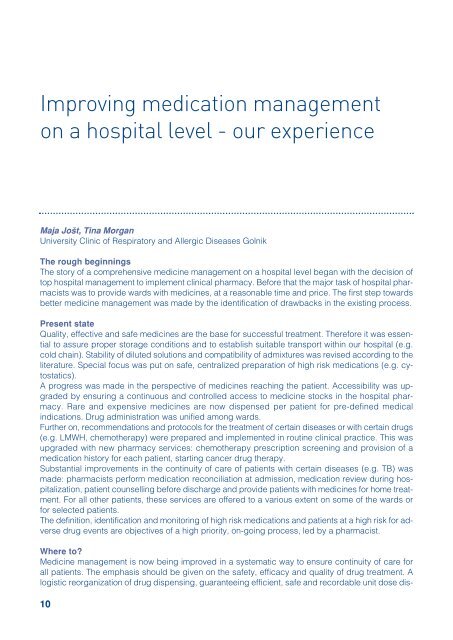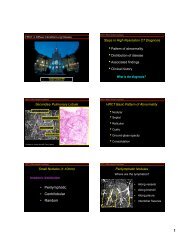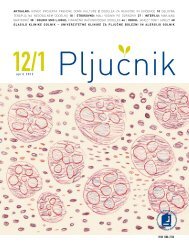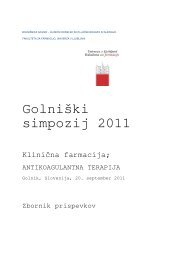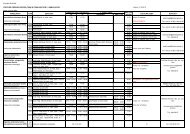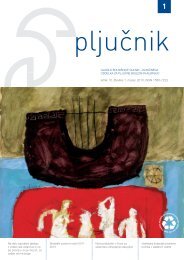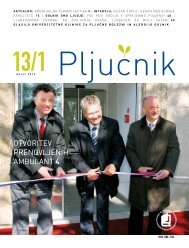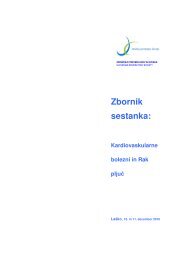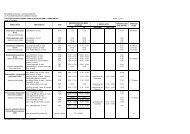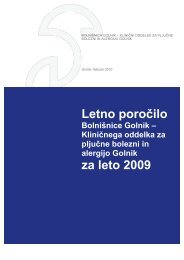Golniški simpozij 2011 Zbornik povzetkov
Golniški simpozij 2011 Zbornik povzetkov
Golniški simpozij 2011 Zbornik povzetkov
Create successful ePaper yourself
Turn your PDF publications into a flip-book with our unique Google optimized e-Paper software.
Improving medication management<br />
on a hospital level - our experience<br />
Maja Joøt, Tina Morgan<br />
University Clinic of Respiratory and Allergic Diseases Golnik<br />
The rough beginnings<br />
The story of a comprehensive medicine management on a hospital level began with the decision of<br />
top hospital management to implement clinical pharmacy. Before that the major task of hospital pharmacists<br />
was to provide wards with medicines, at a reasonable time and price. The first step towards<br />
better medicine management was made by the identification of drawbacks in the existing process.<br />
Present state<br />
Quality, effective and safe medicines are the base for successful treatment. Therefore it was essential<br />
to assure proper storage conditions and to establish suitable transport within our hospital (e.g.<br />
cold chain). Stability of diluted solutions and compatibility of admixtures was revised according to the<br />
literature. Special focus was put on safe, centralized preparation of high risk medications (e.g. cytostatics).<br />
A progress was made in the perspective of medicines reaching the patient. Accessibility was upgraded<br />
by ensuring a continuous and controlled access to medicine stocks in the hospital pharmacy.<br />
Rare and expensive medicines are now dispensed per patient for pre-defined medical<br />
indications. Drug administration was unified among wards.<br />
Further on, recommendations and protocols for the treatment of certain diseases or with certain drugs<br />
(e.g. LMWH, chemotherapy) were prepared and implemented in routine clinical practice. This was<br />
upgraded with new pharmacy services: chemotherapy prescription screening and provision of a<br />
medication history for each patient, starting cancer drug therapy.<br />
Substantial improvements in the continuity of care of patients with certain diseases (e.g. TB) was<br />
made: pharmacists perform medication reconciliation at admission, medication review during hospitalization,<br />
patient counselling before discharge and provide patients with medicines for home treatment.<br />
For all other patients, these services are offered to a various extent on some of the wards or<br />
for selected patients.<br />
The definition, identification and monitoring of high risk medications and patients at a high risk for adverse<br />
drug events are objectives of a high priority, on-going process, led by a pharmacist.<br />
Where to?<br />
Medicine management is now being improved in a systematic way to ensure continuity of care for<br />
all patients. The emphasis should be given on the safety, efficacy and quality of drug treatment. A<br />
logistic reorganization of drug dispensing, guaranteeing efficient, safe and recordable unit dose dis-<br />
10


